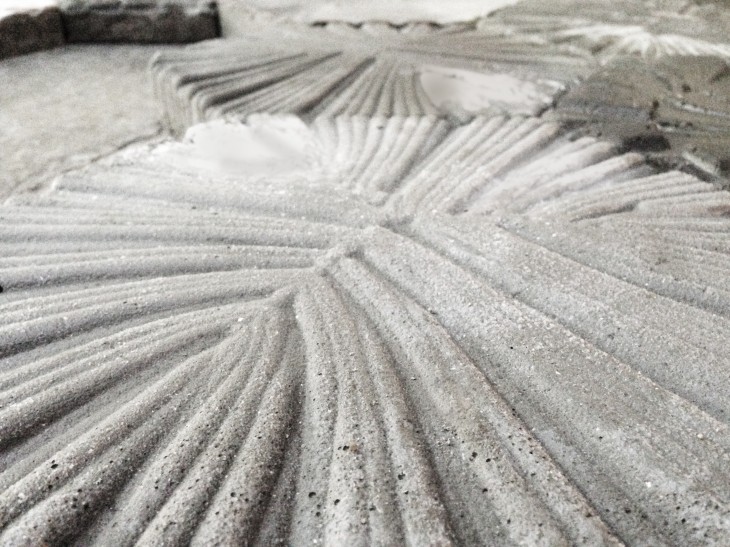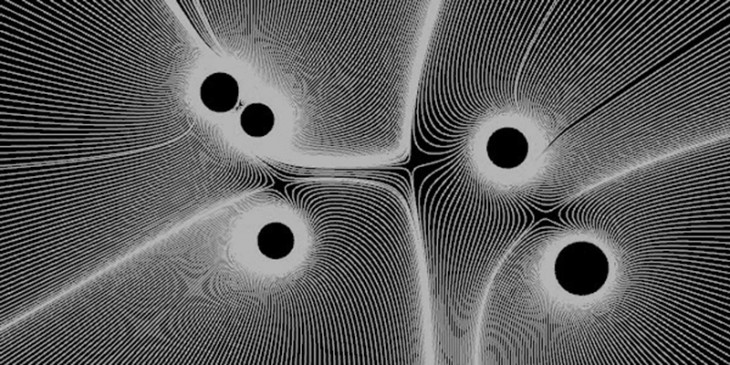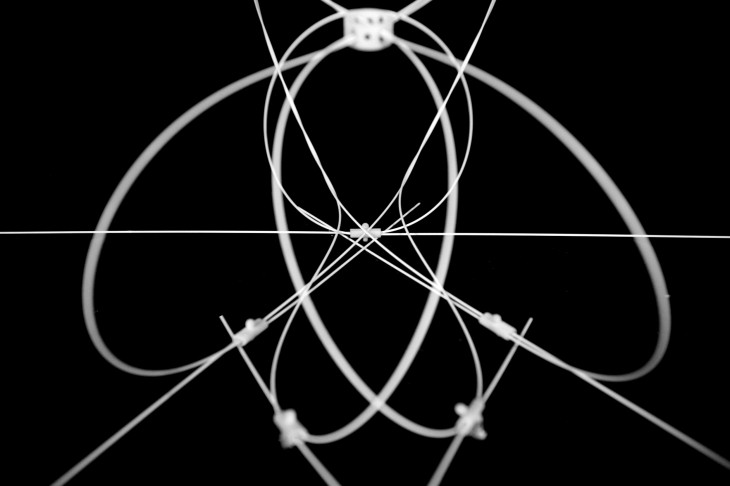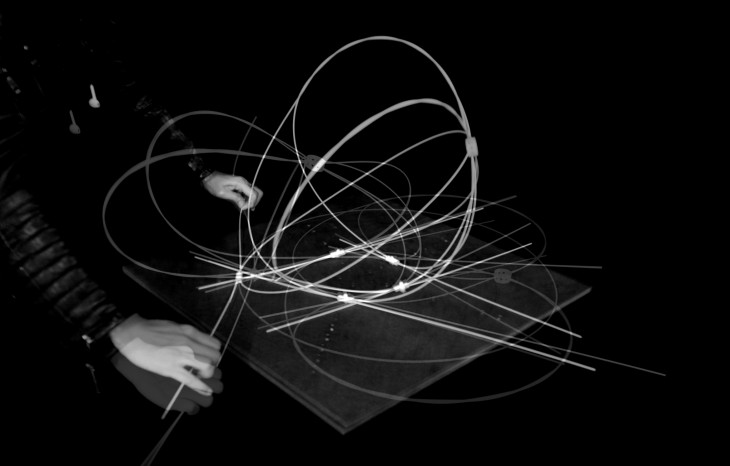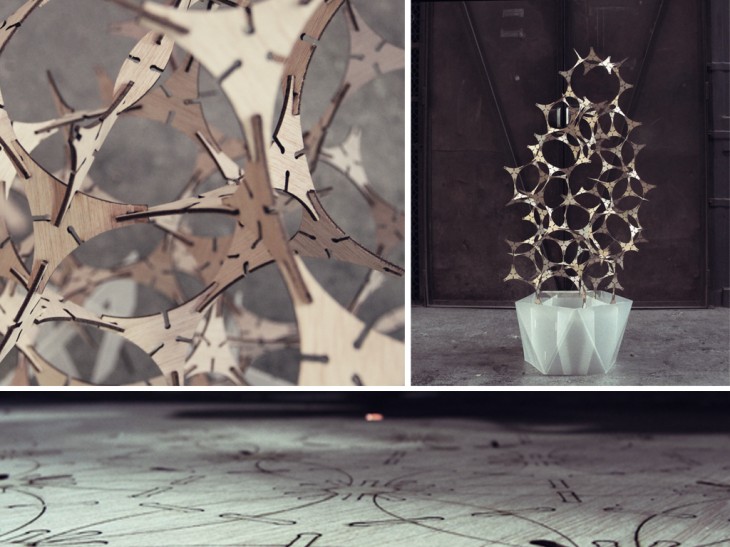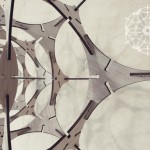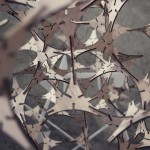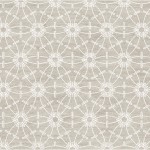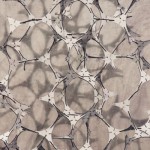The design idea used to create the tile was a method of force fields. In creating this seamless pattern multiple spin forces were merged together and the effect of field lines was extended for better visualization and incorporation into the water evacuation system.
Every line of the system is represented as an “escaping” curve. Each point tries to get away from the force field quickly, leaving those paths behind and creating the data tree structure. By playing with parameters like length, force, radius, distance in between, we could create a controlled distortion according to these field lines and force center.

